The Best Main Monitors for the Truly Serious Project Studio
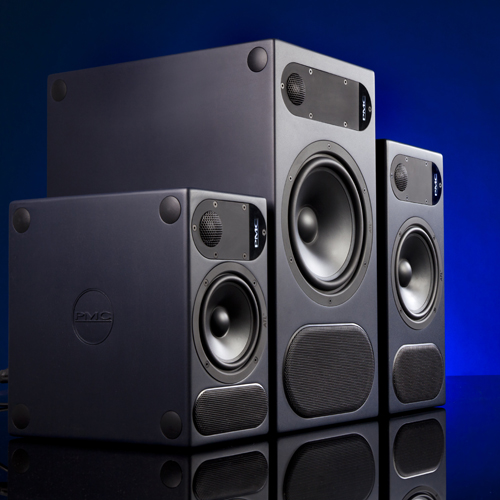
Read on for our top picks in 5 categories of studio monitors between $3,000 and $5,000. Includes entries from ADAM, Focal, PMC, ATC and more.
Studio monitors are a deeply personal choice. They are the lens through which you experience the entire world of sound, and the ruler by which you measure your results.
Those who have been in the audio production game long enough know that your speakers are possibly the most critical parts of our toolkit, alongside our ears and rooms we work in.
They easily make far more of an impact on the quality—and enjoyability—of our work than the sexiest piece of hardware or the most fun and novel new plugin.
Picking the right monitors for your studio is no small task, and when it comes to finding the right pair, your personal tastes, style and goals matter even more than the raw specs. So I’m going to try to take all that into account in this new series of roundups on the best studio monitors out there, all in an effort to help guide you into finding the set of speakers that will work best for what you’re doing.
Today, I’ll offer my picks for 5 of the best monitors for truly serious studios, as well as some additional notes and picks that should help inform your decisions—even if you’re looking at speakers in a different price range than the one we’re looking at today.
It’s not every studio that’s going to justify a set of studio monitors like the ones on this list—all of which cost in the thousands of dollars—but for those of us that are in it for the long haul, they are the kind of investment that can pay dividends for a lifetime. Through these examples, you can also get a sense for the personality of a few of the most important and dominant brands in contemporary speaker design, whatever your budget may be.
Before we get into my winners in 5 distinct categories, a bit more about the criteria we’ll be using:
The Landscape
Today, we’re focusing on speakers that are decidedly high-end, but not ridiculously so. I’d argue that there are 5 basic price categories when it comes to full-range monitors, and I hope to do a roundup and shootout in each of these categories before long. They are:
1) Monitors under $300, that can be great for beginners, or which might serve a secondary purpose in a more established studio.
2) Monitors between $300 and $1,000 a pair, which can be suitable everyday workhorses for serious musicians and beginning producers and tracking engineers.
3) Monitors from $1,000 – $3,000 per pair, which start to become truly reliable professional tools for mid-priced studios.
4) Monitors from $3,000 – $7,000+ per pair that can be suitable for mastering, and leave little to be desired for truly discerning producers and engineers in the recording and mixing realms.
5) Speakers around $10,000 and above that can be truly uncompromising in their design, and which you may find in the very best mastering studios and most prestigious recording rooms in the world.
Each of these categories warrants its own article of its own. (There are also extremely useful speakers that are not full range, like the classic Auratone Super Sound Cubes and the Yamaha NS-10s, and that’s a topic all unto itself as well.) But for today’s purposes, we’re taking a close look at category 4: Professional studio monitors between $3,000 and $8,000.
Why this price range? A few reasons. First, I haven’t seen a good roundup of speakers in this ballpark, even though it’s a category where you really want to be sure you’re making the right choice. Another reason is that this category of speaker often best exemplifies the personality and set priorities of each brand represented, and provides a good vantage point from which to understand their other offerings.
And one final reason is unabashedly selfish:
I recently opened my own home mastering studio for all my unattended sessions, and I needed a pretty serious set of speakers for myself. But I didn’t want to spend $10,000 or more on monitors right out of the gate. (Though perhaps, some day I will….)
I knew that for my critical listening purposes, a great professional workhorse speaker in the $1,000-$3,000 range like the popular ADAM AX or Dynaudio BM series wasn’t going to cut it. As great as these speakers are for most tracking and even mixing engineers, they wouldn’t have been any better than what many of my clients were working on already, and they wouldn’t live up to the expectations I had developed after working on the beautiful multi-driver monitors at Joe Lambert Mastering for so many years. (An investment that would cost about $20,000 to duplicate… and that’s before buying a suitable amp separately!)
Yes, I’m now spoiled, and can’t go back to a life of anything less than unbelieveably fantastic frequency response and accurate transients. For my mastering work, I need to hear the smallest details I can, and have fun doing it. I wondered how close I could get to this level of quality without the enormous price tag—and footprint—of a pair of freestanding floor monitors like those $20,000 KEFs I had come to enjoy so much. (And that’s not counting the price of a suitable amp!)
The notes below are a result of my own journey for the perfect pair, and I think any of the speakers that made this list would be a fantastic option for serious professional mixing or even mastering work.
Without any further ado, here are my winners in 5 major categories. Do you feel like I missed a top contender you would have chosen instead? Tell me about it in the comments! I read every one.
Winner: Best Transient Response
PMC two.two8
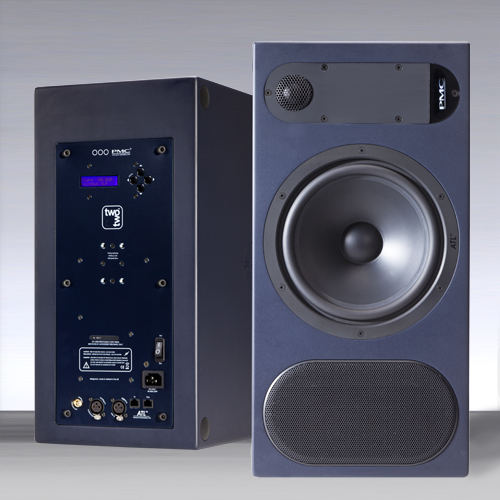
The PMC two.two8 stands out for its remarkable transient response, stereo imaging, and tight, resonance-free low end.
Buy it new on Sweetwater, B&H, Thomann, or Amazon. Look for deals on Reverb.
The first set of speakers on our list is unlike any of the others, for a couple of reasons.
The biggest benefit of working with the two.two8 from PMC is that they offer a low end that extends down deep without even the slightest hint of resonances. This is in part because of the unique “ATL” or “Advanced Transmission Line” technology inside all the PMC monitors.
The Advanced Transmission Line is basically a sophisticated porting system that packs more than 5 feet worth of bass port into a small package, allowing for extremely deep bass extension—very flat all the way down to 35Hz—with no real resonance or “one note bass” effect to speak of. There’s practically no smearing, and there’s a fantastic transient response and great phase coherence. (And all that magic is happening before the onboard DSP improves imaging and phase coherence even further.)
The three things that amazed me most about the two.two8 were the wideness of the sweetspot, the detail in the stereo imagine, and most of all, the remarkable transient response, particularly in the low end.
I have simply never heard speakers this size that were this crisp and precise in the lows, and with with such exquisite detail and speed in the transients, allowing me to really hear the finest adjustments of attack and release on a compressor in a way that I’ve only experienced before with even more expensive floor-standing speakers.
As great as all the other speakers are on this list—each with their own unique strengths—the PMCs outshone when it came to the precision of the stereo image, the width of the sweet spot, lack of resonances, and the quickness and accuracy of the transient response—particularly in the bottom.
There is more than enough detail for any mixer or producer here. I’d also say that these are easily suitable speakers for a mastering engineer who doesn’t have tens of thousands of dollars to spend on a pair. The ability to distinguish what is really going on in the highs here is incredible, and assuming your room is up to the job, you’ll certainly have greater insights into what’s really going on in the low end than any of your clients. If mastering was the task, this set might be in the top running at this pricepoint, depending on your tastes.
But as much praise as I have for these speakers, they’re not going to be the right choice for everyone. There are many producers and engineers who may prefer another entry on this list, due to a couple of factors. For one, the other thing that makes the PMCs unique is that they are the only speakers on this list that are “two way”, meaning that they have a subwoofer and a tweeter only.
While this may seem normal to most of us who have bought speakers for less than $3,000 in the past, all of the other speakers in the price range that made this list are three way speakers. This means that they have a dedicated midrange driver. And this is no small difference.
While the two.two8 is fantastically detailed in the bottom and top, it doesn’t quite have the midrange detail that a great three way monitor can. PMC, of course, also make excellent 3-way monitors, but the price for a powered pair with this kind of bottom end would be significantly higher.
A good three way monitor really brings the midrange into focus, and can tell you things that a two-way sometimes can’t. Don’t get me wrong, the midrange on the two.two8 was terrific. Very pleasant in fact. But there was one trick it wouldn’t do: These speakers, unlike some of the three-ways on the list, would not tell me with quite the same alacrity when my midrange was annoying.
There wasn’t quite a “dip” in the midrange of the two.two8 per se. Just a little more softness and a slightly more forgiving feel than some of the three-ways. For some mixers’ tastes, this might not be ideal, and could warrant a second, smaller set of speakers like Auratones or NS10s to round out the studio’s monitoring options. A few of the other speakers on this list that could better suit a producer or engineer who prefers a more forward an unforgiving picture of the midrange.
Another common critique of the PMCs is that they might be bass light for some tastes, or too “clinical”. I didn’t find this to be the case at all—but I have a mastering engineer’s tastes these days. For those who want a fuller, bigger bottom and a lot more “fun” out of their mains, there could be other options as well. More on that in a moment.
The look of the speaker doesn’t quite scream “fun” either, and rather says something like “practical and utilitarian”, in a very polite and British kind of way. But to the speaker’s credit, the minimalist look does seem to disappear into the background as you listen, so that all you see is the pictures your mind dreams up as you listen to your music.
Pros: Amazing transient response, flat bass with minimal resonance, remarkably wide sweet spot, with a bright, detailed and clean top end.
Cons: Lacks a third driver at this price point, offers pleasant but forgiving midrange, and a very simple and minimalist visual aesthetic.
Best for: Mastering and critical listening. Good for mixing when complemented with a smaller mid-focused monitor. May not offer enough “fun factor” for inital music creation and production.
Alternatives: Admittedly, these are some of the more expensive speakers on this list. If $8,000 for the pair is too rich for your blood, a two.two6 and 5 model are also available.
The new Result6 is also available and comes in at a price point closer to $3,000. Though it lacks the onboard DSP, amazing wide sweetspot and low end extension of the two.two8, it has a similar sound, and slightly more forward-feeling midrange thanks to the smaller speaker.
Winner: Most Fun
Focal Trio 6 Be
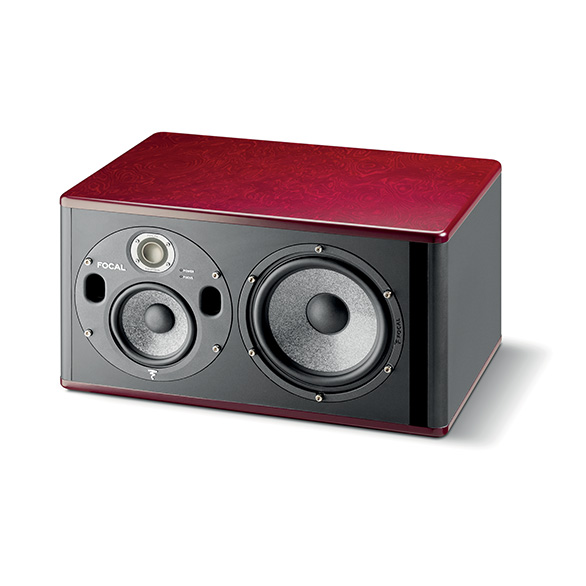
The Focal Trio6 Be features a swiveling mid and high frequency driver for vertical or horizontal placement, a unique “Focus Mode”, a beautiful look and a satisfying sound.
Buy it new on Sweetwater, B&H, Thomann, or Amazon. Look for deals on Reverb.
For the second entry on this list, I picked the set of monitors furthest from the PMCs on this list.
Everything about these Focals is different than the prior entry, from their looks to their sound, to their feature set.
First things first, these speakers are gorgeous.
I know, I know, it’s supposed to be all about the sound. And it is. But you’ll also be looking at your speakers all day every day, and it’s nice to see a set with a bit of attention paid to aesthetic appeal.
The side panels on these monitors sport a beautiful deep cherrywood finish, and the hint of grey in the drivers and front panel makes these speakers come to life (though still in a tastefully understated way) compared to the more utilitarian and industrial designs seen elsewhere on this list.
The unboxing experience for Focal’s products is like that of few other brands in audio. It’s reminiscent of opening up an Apple product for the first time, with the brand’s focus on end-user experience becoming unmistakable from moment one. Everything about it just feels like a “luxury” product.
The look of these speakers isn’t the only thing that makes them stand out. The sound of them has a touch of nice color as well, and there are a couple of extra features that give them their own personality.
Unlike the PMCs, I couldn’t imagine why anyone would be complaining about the low end on the Trio6 Be. The Focal Trios strike a welcome blend of offering more than enough transparency to justify the price, and just enough hype to make you feel good about spending it.
The low end here was full—a bit more amped up than the average of the speakers on this list—but still much more free from resonances than speakers in any lower price category. The top end was extended but not overly harsh, and the third speaker for the midrange brought the mids forward and into great focus.
The Trio6 sounded pleasant and were easy to listen to for hours, but would also tell me—in no uncertain term—when the mids were starting to sound obnoxious. This is an especially useful trait in mixing.
These are speakers that are fun to listen to, but are also neutral enough to disappear into the ether so that you don’t feel like you are listening to speakers at all, but just hearing music.
There are also a couple of unique features that make these speakers even more flexible.
First, there is the “Focus” mode that allows you to turn off the low frequency drivers on both speakers and set a new crossover point with the stomp of a footswitch, turning them from full range monitors to compact nearfields, somewhat reminiscent of a much more neutral pair of NS10s in an instant.
Secondly, unlike most monitors on this list, the mid and high frequency driver assembly can rotate in place, allowing you to turn these from a vertical orientation to a horizontal orientation should your needs ever change.
If you are looking for a pair of compact “mains” that offer a little bit of fun and a little bit more satisfying “boom” on bottom—all while still providing enough of the informative neutrality and lack of resonance that warrants spending this kind of money—then these are a great bet.
If you need the absolutely flattest, fastest response possible for critical mastering work, they are certainly serviceable, even if they wouldn’t be my first choice for that application.
Pros: Beautiful design, big but clean low end, focused and assertive midrange, very good SPL handling, adjustable horizontal/vertical orientation and “Focus Mode” for nearfield-style limited bandwidth listening.
Cons: Not quite as flat, fast and precise, as some other options.
Best for: Fun and very useful main monitors for music production and recording. Quite good for mixing, especially with the “Focus Mode” option. Serviceable for mastering work.
Alternatives: At about $6,000 for the pair, these are fairly affordable for a high end speaker of this kind of build quality. For those who want even more level and bottom, an even larger Trio11 is available for $8,000. The Twin6 series, coupled with a sub could also be a good bet for hip hop and EDM producers who want a truly silly amount of low end, and would come in at just under $6,000.
Winner: Best Midrange / Most Useful
ADAM S3H
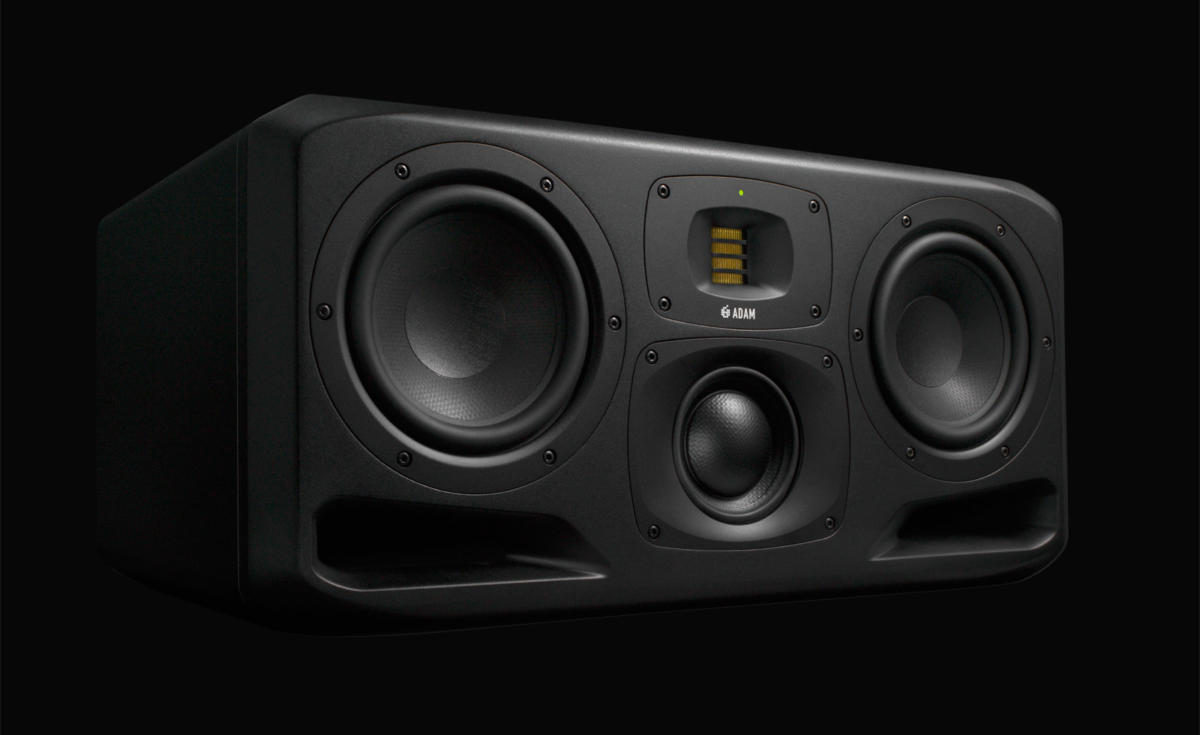
The ADAM S3H is one of the most useful speakers for mixing on the market today, in this author’s opinion.
Buy it new on Sweetwater, B&H, Thomann, or Amazon. Look for deals on Reverb.
Okay, I’m a bit biased. ADAM have been one of my favorite speaker makers for years.
In the early 2000s, the original S series had taken the NYC studio scene by storm, and were the speakers everyone seemed to be talking about. And for good reason! No one had ever seen anything quite like the unique ART folded ribbon tweeters before, or heard a large set of speakers quite like these.
The top end was extremely detailed, but never overly bright or fatiguing, and they offered a truly neutral and detailed midrange that seemed to make small nearfields like NS10s or Auratones completely unnecessary and redundant for the first time.
All of those things I just said I would say all over again about the latest version of the S series, exemplified here by the S3H. (The S series are also available in a vertical orientation as the S3V, and in smaller and larger sizes.)
On paper, ADAM speakers have only gotten better over the years, with improved power and performance, and this set of speakers did not disappoint. Once again, the new ADAM S series had an incredible high end that was somehow detailed and subdued at the same time. The bass was full, deep, and light on resonance. But most of all, the incredible level of detail and precision of the midrange is what stood out for me once again. If mixing was my main thing, these would be the speakers for me, no question about it.
The ability for these monitors to tell you the absolute truth about your mids—both good and bad—is what makes me give them the award for “most useful”. They offer practically all the benefits of mixing on a pair of classic little nearfields like NS10s or Auratones without any of the drawbacks. They are the kind of full range speakers that will just never lie to you.
Though great sounding music will sound great on these speakers, they are not “flattering” speakers per se. If your mix sucks, these speakers will let you know. If there’s a problem in the mids, you will hear it.
I can’t say these are in the running for the most “fun” speakers on this list. The truth can hurt sometimes. But what’s really fun is how much better a set of speakers like these can make your mixes sound.
Remember: your mixes will always sound a bit like the inverse of your speakers. And these speakers sound pretty much the opposite of how you’ll likely want your mix to sound—which is a good thing. Compared to other speakers in this range, they’re a bit dark on top, a bit forward and unforgiving in the mids, and fairly neutral and unhyped in the bass. That’s a good combo for mixer to look for in a set of speakers.
The one minor gripe I have about these speakers is that there are two totally different designs for the vertical and horizontal orientations, so you can’t just buy one set and change them around if you find yourself in a different type of room or with a new remodeling plan on your hands. But that’s a pretty minor gripe indeed.
Pros: Fantastic midrange, smooth and detailed top end, tremendous power handling, solid and unhyped bass. Extremely honest and useful tool for mixers.
Cons: Not particularly “flattering” or “fun” for main monitors, could be too unforgiving or uninspiring for initial music production for some tastes. May not suit the tastes of those who prefer a particularly bright, articulate or fast monitor for mastering or other applications.
Best for: Mixing. Great for recording, good for music production, totally workable for mastering.
Alternatives: At $7,000 those speakers are near the top of this range. The vertical S3V version can be had for $6,000 with a slightly different driver configuration. For those who are willing to spend even more, the truly massive S5 series is available. The S2V is only $3,500 if you’re looking for a compact, 2-way nearfield design. For those on a much smaller budget, the predominantly two-way AX series is one of the most popular intermediate studio monitor lines out there for good reason.
Winner: Best All Around
ATC SCM25A Pro
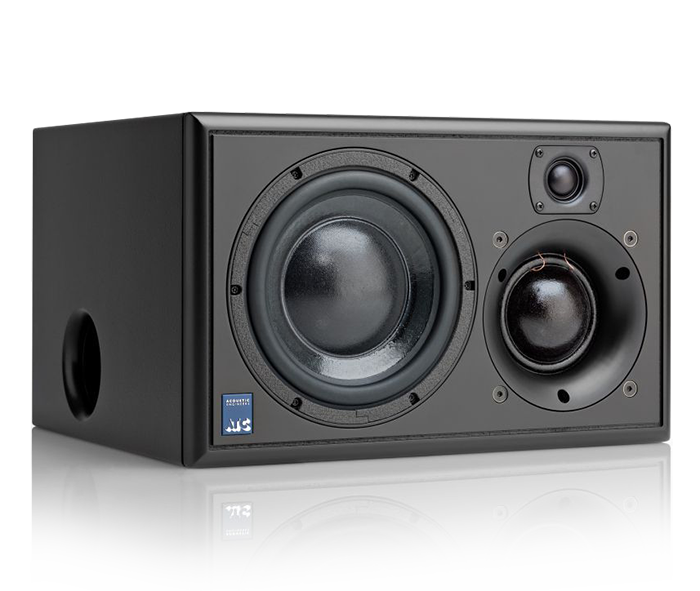
The SCM25A are some of the most well-rounded speakers available in this price range.
Buy it new on Sweetwater, B&H, Thomann, or Amazon. Look for deals on Reverb.
Ah, the ATCs. What gorgeous sounding monitors. These are another favorite of “pros in the know”, and can be found in many of the best studios around.
It would be an insult to call these speakers a “jack of all trades”. They’re not. What they are is exceptionally well-balanced monitors, offering a great set of tradeoffs.
They have a lot of the useful and detailed midrange of the ADAMs but perhaps not quite as dark, complemented with some of the “fun” and flattering feeling of the Focals but while feeling perhaps more neutral, coupled with a good deal of the precision of the PMCs without feeling too clinical or light in the lows.
The SCM25A are just darn good speakers. Arguably, they are some of the better balanced options out there.
If you have no idea what you want out of a set of monitors, but know you just want them to sound “great”, you’d be hard pressed to go wrong with some ATCs. Practically everyone is going to find something to like here.
The only complaint I could imagine here is that the visual design is about as plain, unmemorable and initially uninspiring as they come. But the more you hear these speakers, the more you begin to associate the way they look with the way they sound, and at that point, they start to look very good indeed.
Pros: Great all-around performance. Excellent balance of tradeoffs to find a happy medium in most every domain.
Cons: A bit on the expensive side, relative to the specs and feature set. Very minimalist industrial “Plain Jane” of a look.
Best for: Anything really. Equally suitable as a production, recording, mixing or mastering speakers. Some monitors might excel most in any one of these categories, but the ATCs perform about equally well whatever you plan to do with them. This makes them an especially good bet for commercial studios that need to satisfy the tastes of a wide variety of engineers.
Alternatives: These speakers will set you back about $8,000 and are the most affordable 3-way monitor that ATC makes. Plenty of incredible options are available from $10,000-$20,000 as well. Anything less expensive than these is going to be a 2-way monitor. If that’s not a dealbreaker, the ATC SCM20ASL Pro at about $5,500 could be a good bet as well.
Winner: Most Intersting New Design (AKA: “Speakers I Wish I Tried But Didn’t”)
Tie: Barefoot Footprint 01, Dynaudio Core Series
For whatever reason, I couldn’t get a set of the latest Dynaudios or Barefoots into my studio in time for this review. The Core series from Dynaudio was announced about a year ago, and the latest Barefoots about a year before that.
I have tremendous respect for both brands, and worked on large Dynaudio mains that I really loved the sound of at Strange Weather in Brooklyn years ago that I don’t think I’ll ever forget. Their new Core series features a rotating mid and high frequency driver much like the Focals and stands as the top of their new line.
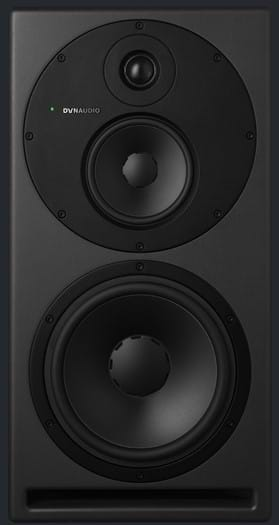
Dynaudio’s new Core series peaks out at about $6,000 per pair for the Core 59.
Buy it new on Sweetwater, B&H, Thomann, or Amazon. Look for deals on Reverb.
Though I never found myself preferring Dynaudio’s BM series over ADAMs AX when comparing models at a similar price point, a good deal of that may be my own personal tastes.
I tend to mix a bit dark, and so prefer a darker sounding speaker like the ADAMs to help compensate for that. Those who have the opposite inclination may prefer the Dynaudios, which tend to skew slightly brighter to my ear.
The top end of their new Core series is about $6,000 for a pair, and who knows? Could they give ADAM a run for the money in this price range? That may partly come down to taste.
I wish I had the chance to hear them in a more controlled environment and weigh in more precisely myself, but after much waiting, demo units were not forthcoming as the line is so new and review units have been so limited in availability.
As for the Barefoots? Well, that’s my fault. I just plum forgot. Compared to each of the brands mentioned here their unique designs are not quite so ubiquitous a presence in marketing or at dealerships, and when I finally sat down to write this list of my top picks I was kicking myself for having not tried out their latest inexpensive 01 model, or their slightly older and larger MicroMain45 model which would also sit in the price range we’ve been exploring today.
I have some limited experience hearing these, and have heard larger and earlier designs from Barefoot that are nothing short of amazing. Their designs are truly unlike anything else out there in both technical approach and aesthetics.
I’d be unsurprised if the MicroMains or newer 01 model would be one of the better bets for those looking for some reliable mastering speakers without breaking the bank. I’ll have to get some in here to evaluate soon for an update in the not-too-distant future.
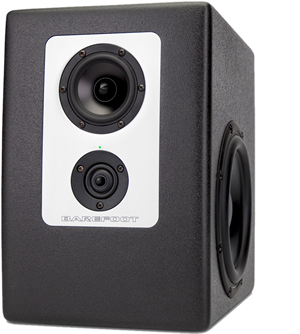
At about $3,500, the Barefoot Footprint 01 is one of the most unique (and affordable) 3-way monitors to make this list.
Buy it new on Sweetwater, B&H, Thomann, or Amazon. Look for deals on Reverb.
Sound Off
Did I miss some speakers in this roundup? I’m sure I did. There are brands that some people love, like JBL and Genelec and more that just aren’t represented here. Ultimately, I wanted to create a manageable list, focusing on the speaker designs and priorities that most spoke to my tastes and interests.
Realistically, getting a full dozen high-end speaker pairs into my studio for side-by-side listening would have been a somewhat impractical task, and I wanted to hear these models as back-to-back as possible to give truly useful and reliable write-ups of each. That meant having to pick and choose to a degree, and be comfortable simply hearing some of the models that didn’t make my own personal list in outside environments.
I hope this has been some worthwhile and useful reading for you. If you think I missed a set that’s a true winner or want to quibble with any of my evaluation here, I’m all ears! Please get yourself to the comments and tell me all about it.
Please note: When you buy products through links on this page, we may earn an affiliate commission.







[…] http://sonicscoop.com/2019/09/25/best-main-monitors-for-the-serious-project-studio/ The Best Main Monitors for the Truly Serious Project Studio […]
[…] Those who have been in the audio production game long enough know that your speakers are possibly the most critical parts Read more… […]